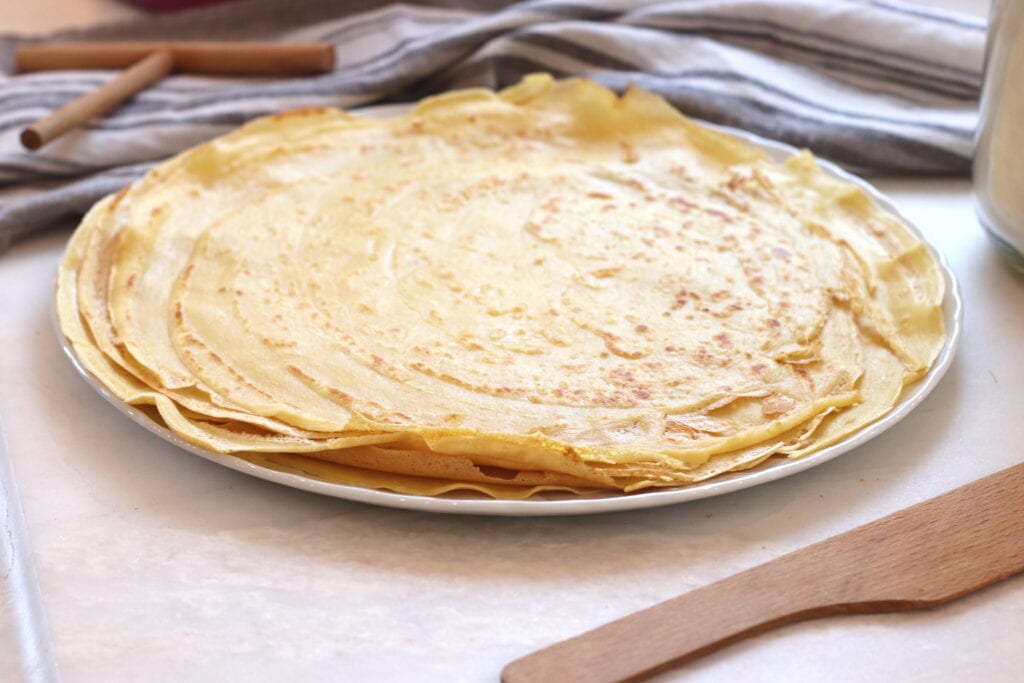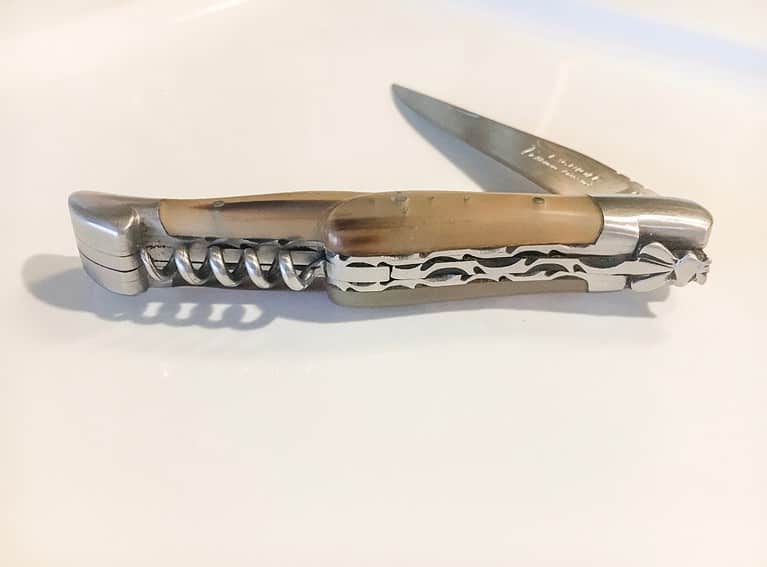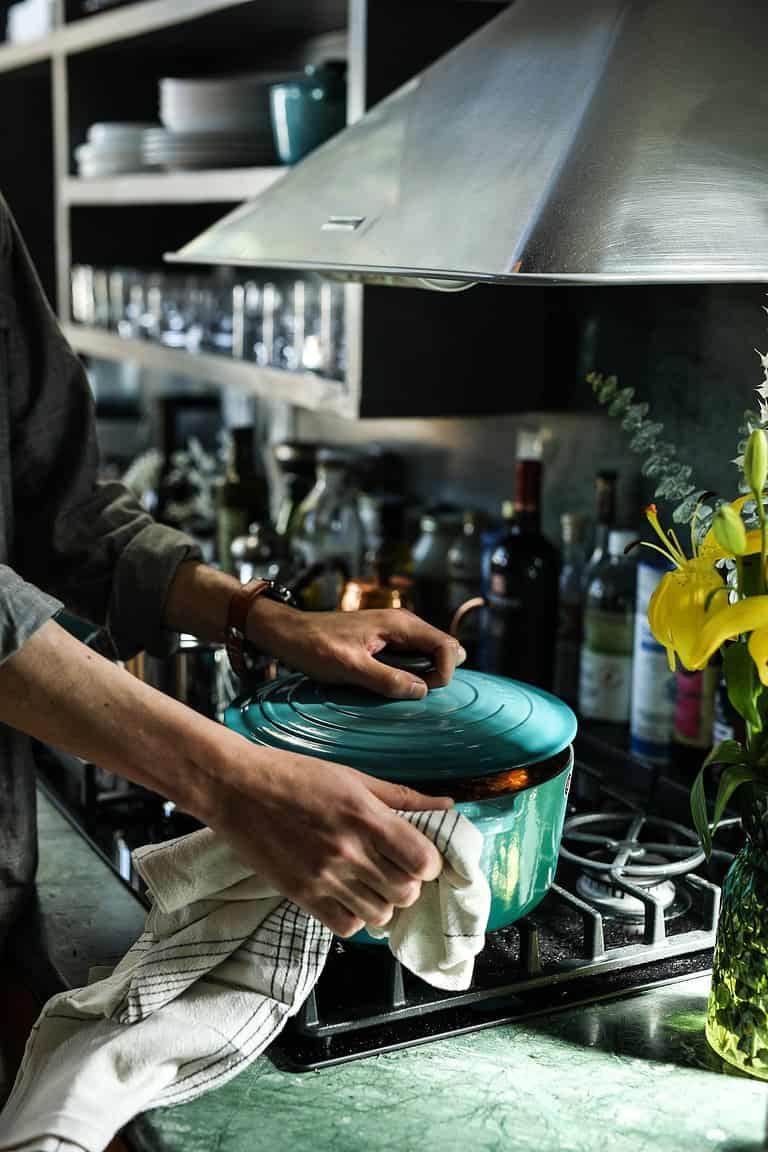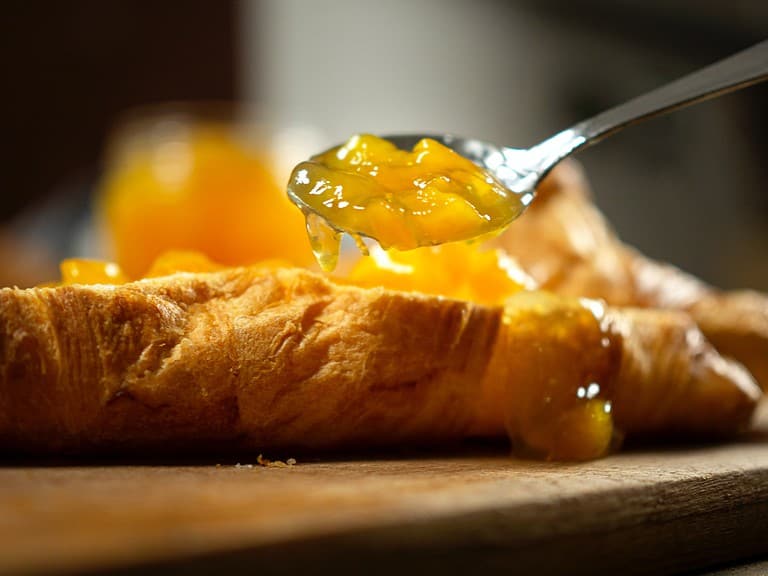This post may contain affiliate links. Read our full disclosure policy here.
In France, crêpes are more than just a recipe — they are a ritual. They show up at birthdays, family gatherings, and especially on February 2nd, the holiday of La Chandeleur, when families gather around the stove to flip crêpes together. Whether sweet or savory, crêpes carry the charm of something simple yet special. If you’ve ever wondered how the French get their crêpes so thin and even, the secret isn’t complicated: it’s the crêpe spreader.
Today, I’ll walk you through how to use a crêpe spreader so your homemade crêpes come out beautifully round and delicate — just like in a French crêperie. If you haven’t yet, be sure to also check out my Authentic French Crêpe Recipe so you can practice as you read along.
What Is a Crêpe Spreader?
A crêpe spreader (sometimes called a rozell) is a small wooden tool used to spread crêpe batter into a thin, even layer. There are two main types:
- Round spreader – shaped like a T, ideal for beginners because it feels steady in your hand. This is the kind I like to use.
- Flat spreader – shaped like a little disk on a stick, often used by professionals on a large crêpe maker or electric griddle. A little more difficult to master, in my opinion.
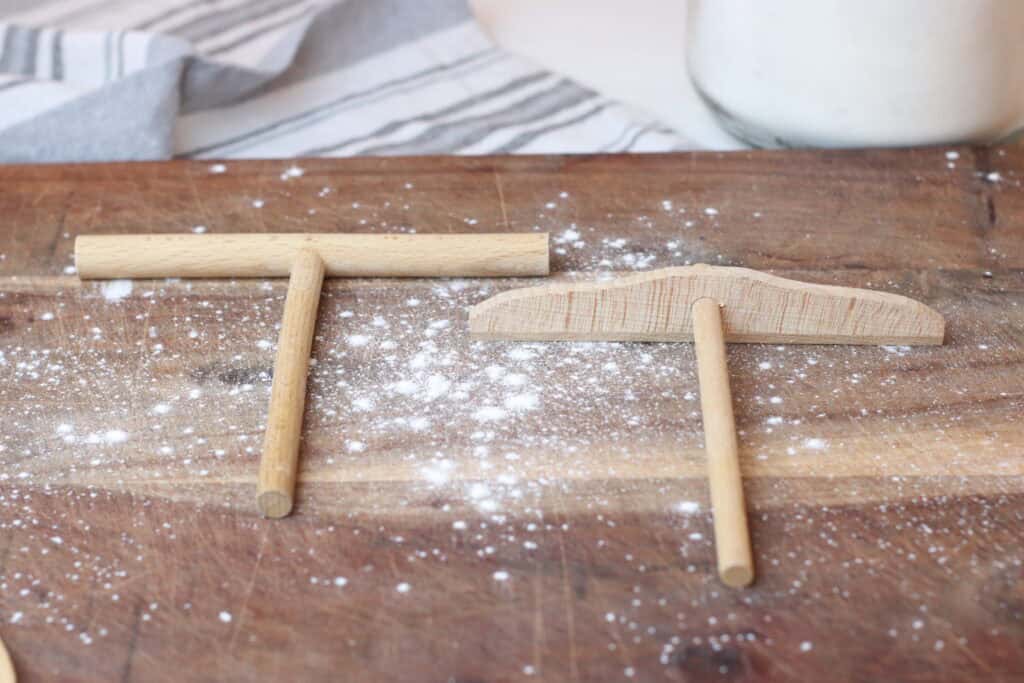
Both tools do the same job: they take a small amount of thin batter and quickly spread it across the hot surface in smooth circles. If you’ve only ever made normal pancakes, using a crêpe spreader might feel unusual at first — but once you get the rhythm, it’s simple and fun. And trust me, if my own children were able to learn how to use a crêpe spreader at ages 10 and 13 — with only a few tries — you can too.
Getting Set Up
Here’s what you’ll need before you begin:
- Crêpe pan or a flat, nonstick skillet. An electric crêpe maker or electric griddle also works beautifully.
- A bowl of thin, pourable crêpe batter (see my recipe for the perfect consistency).
- A ladle or measuring cup (I use about ½ cup batter per crêpe).
- Your chosen crêpe spreader — round or flat.
Tip: Keep a damp cloth nearby to wipe off your spreader if it gets sticky.
Step-by-Step: How to Use a Crêpe Spreader
1. Preheat the pan
Heat your crêpe pan over medium heat. You want it hot enough to cook the batter quickly, but not so hot that it scorches before you can spread it. If you are using a non-stick skillet, proceed to the next step. If not, put a small amount of butter (about 1/2 teaspoon) on the pan.
2. Pour the batter
Hold the ladle a few inches above the surface and quickly pour about ½ cup thin batter into the center of the pan, letting it settle for 1–2 seconds.
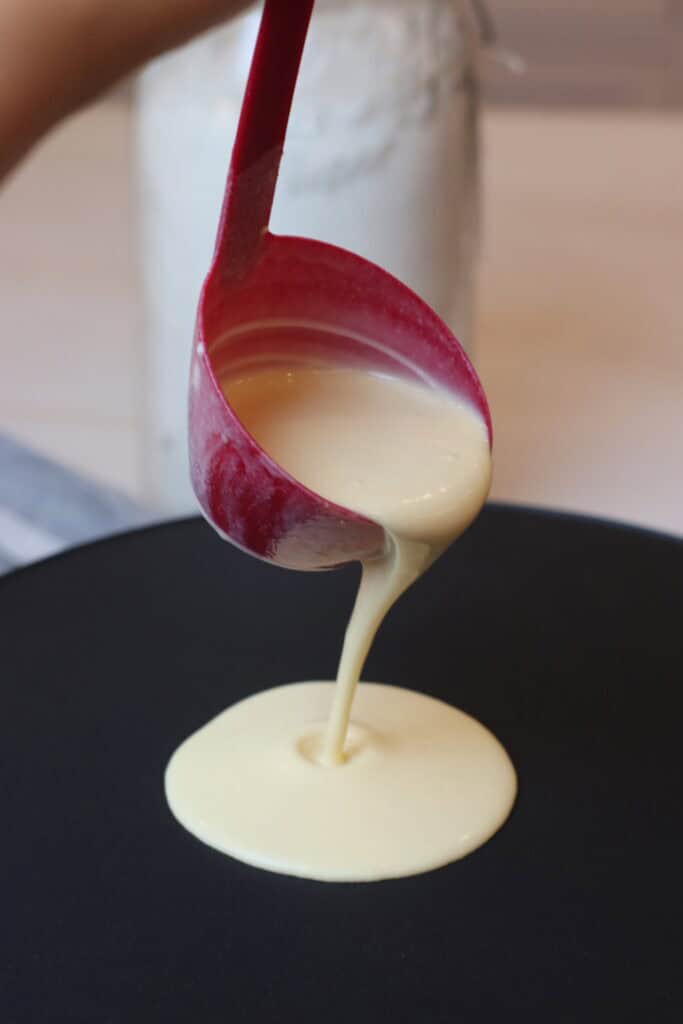
3. Spread the batter
Working quickly, set the spreader lightly on the puddle of batter with a tiny forward tilt. One end of the “T” should be kept in the center of the batter circle while you are working. Keep pressure feather-light so you glide across the surface, not scrape it. The motion should feel almost like polishing the pan — gentle but steady.
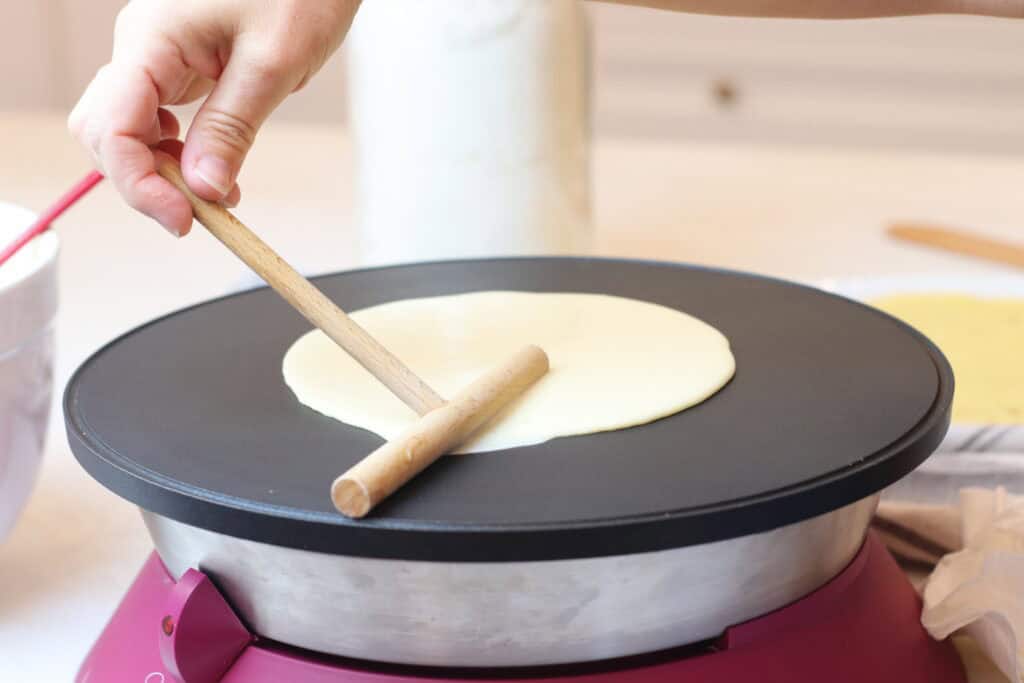
If you’re right-handed, start in the center and drag the spreader gently to the left, moving AWAY from you to start a small counterclockwise circle. (Left-handed cooks: drag to the right, moving clockwise.)
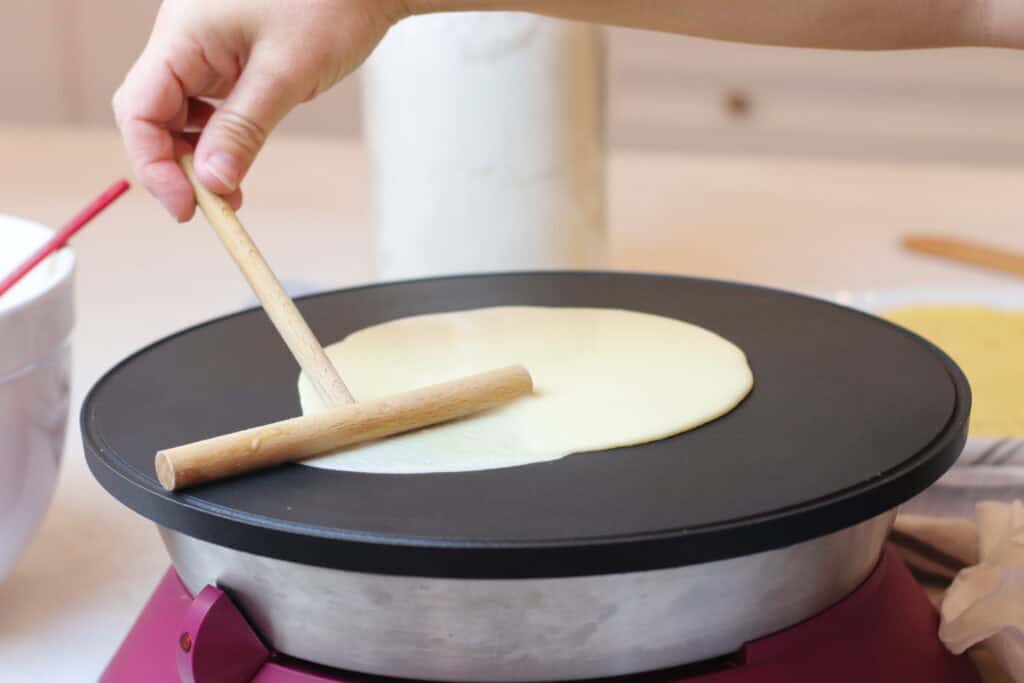
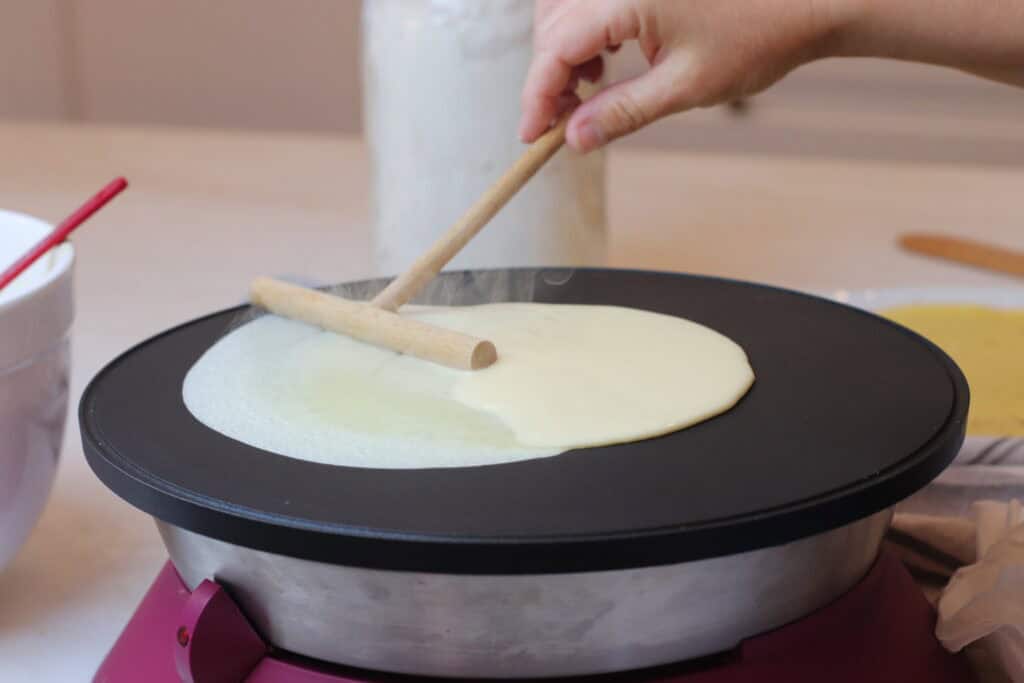
Without lifting the tool, keep the circular motion going, widening each pass to push batter evenly toward the edges. Think “polish the surface”—steady motion, light pressure.
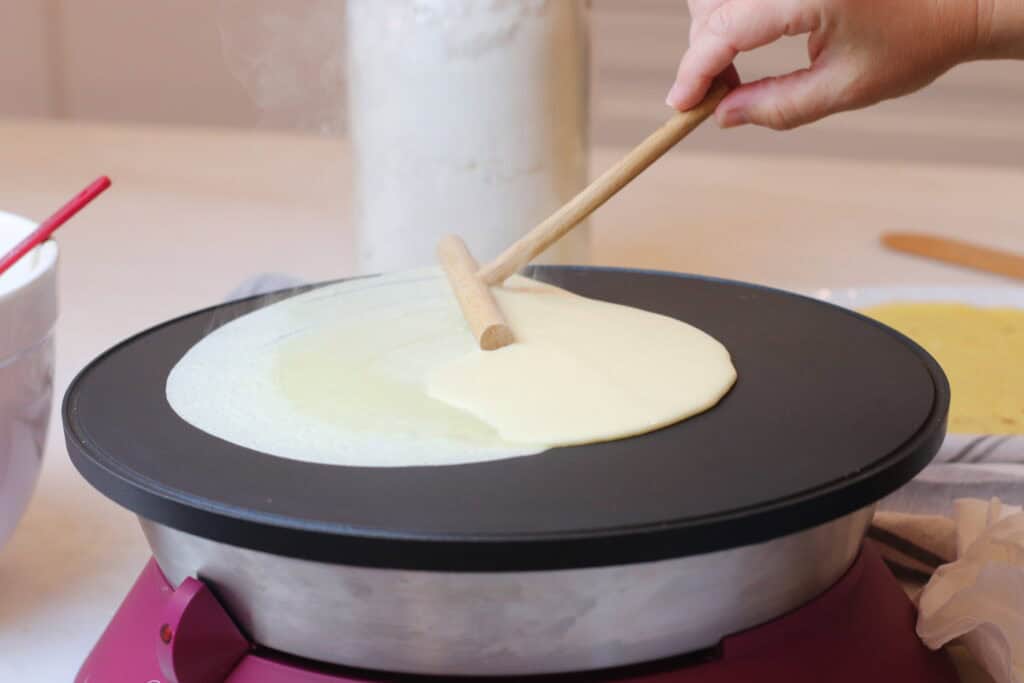
As you reach the rim, feather the last pass with an even sweep to smooth ridges. Lift the spreader straight up where you began to avoid a mark.
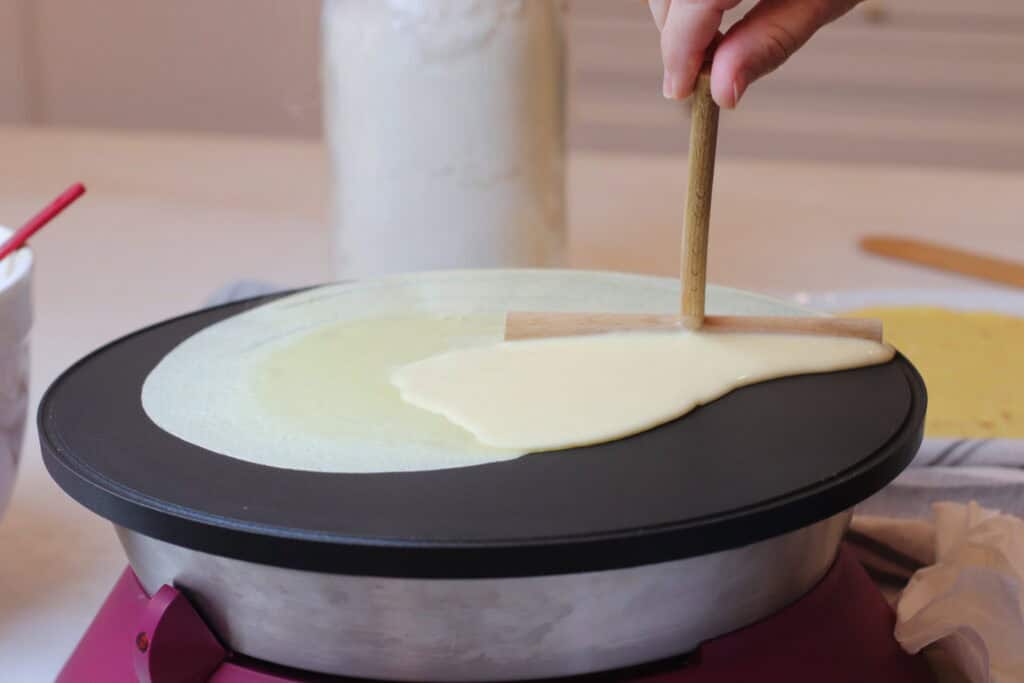
Cook 45–90 seconds until the surface looks set and the edges lift (see picture below) and turn lightly golden. You should be able to slide a spatula under the edge cleanly.
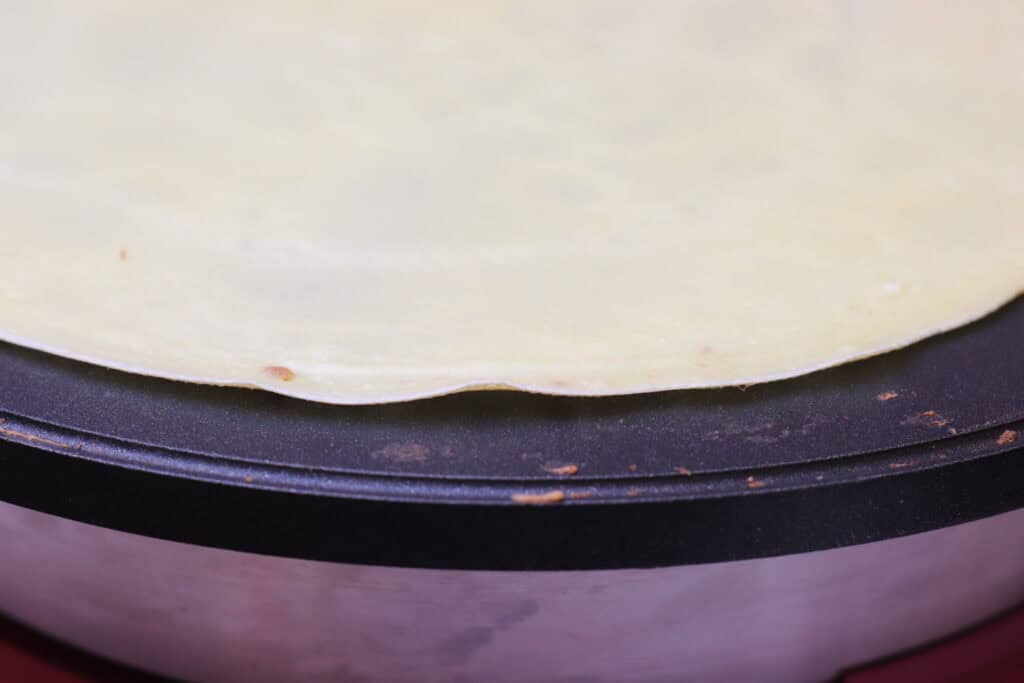
Slide a spatula under the edge, lift, and flip. Cook 10–20 seconds on the second side, then slide the crêpe onto a plate. Repeat with small amounts of batter for each crêpe.
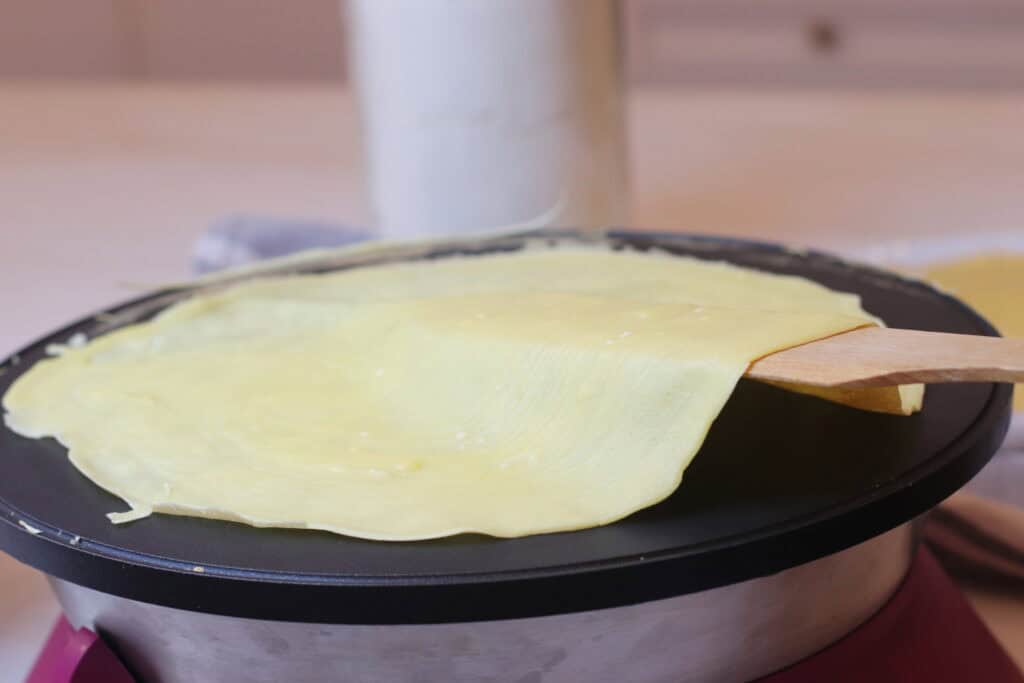
Tips for Success
- Thin batter is key. If your batter feels too thick, whisk in milk, one tablespoon at a time, until it pours easily. If your crepes are hard to spread or coming out too thick, the most likely reason is that your batter needs more milk.
- Do not press down on the crêpe spreader. This will lead to tears in your crêpes. Hold it gently and glide in along the surface.
- Practice makes perfect. Your first few crêpes might not be picture-perfect, but they’ll still taste delicious. You’ll be surprised how quickly your own hands learn the motion.
- Use medium heat. Too hot, and the batter will set before you can spread it. Too low, and the crêpe won’t cook evenly.
- Experiment with flavor combinations. Classic sugar, Nutella, or ham and cheese — crêpes welcome both sweet and savory fillings.
- Storage tip. Stack cooled crêpes, slip them into an airtight container, and refrigerate for a few days. They also freeze well for later. See my post on My Grandmother’s Crêpe Recipe for more details on storage.
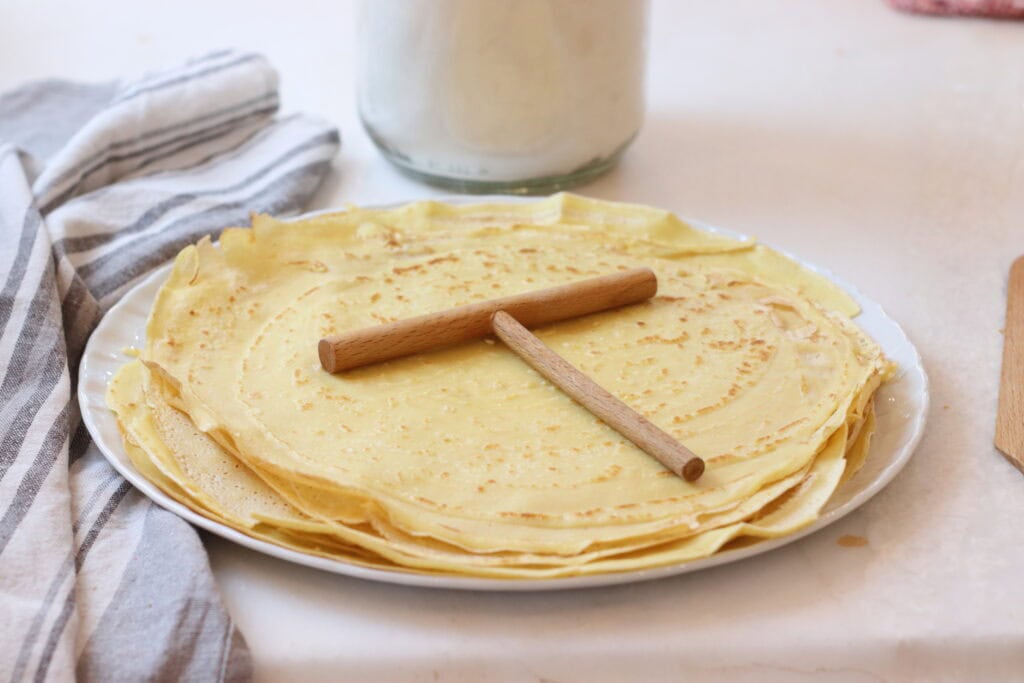
Crêpe Spreaders: Do You Really Need One?
Can you make crêpes without a spreader? Absolutely. You can swirl the pan by hand, and it works just fine. But using a crêpe spreader takes your crêpes from “good” to “wow” by giving them that professional thinness and uniform shape. It’s also easier on larger pans and electric crêpières where swirling isn’t practical.
If you’re ready to try one, you’ll find many options — from simple wooden tools to full crêpe-making kits. I recommend starting with the round crêpe spreader, and remember: even the most seasoned French cooks started somewhere.
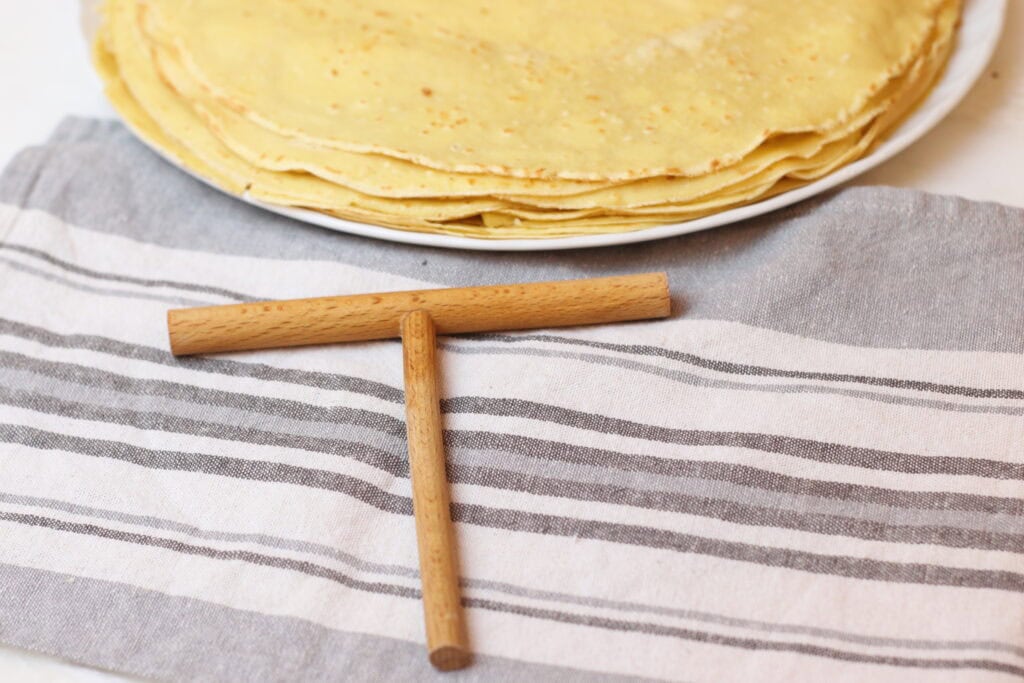
A Nourishing Perspective: Crêpes are about the joy of gathering. Standing around the stove with family, taking turns at the pan, laughing when a crêpe tears or flips too soon — this is the French way of cooking. It’s not about perfection but about sharing something warm and simple together.
Don’t be discouraged if your first few are uneven. Keep practicing, and soon enough you’ll be spreading and flipping like a pro. And once you’ve mastered the crêpe spreader, you’ll discover that the possibilities — from sweet indulgences to savory meals — are endless.
Ready to begin? Start with my Authentic French Crêpe Recipe, then come back here to practice your spreading technique.
Bonne chance, and bon appétit!
-Gaby
